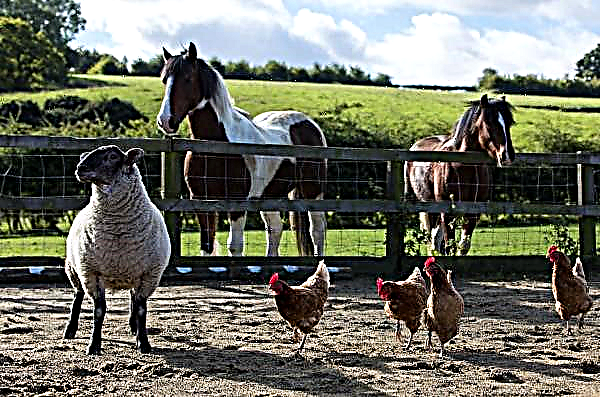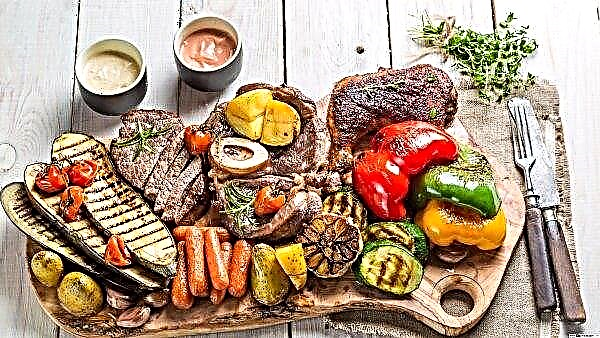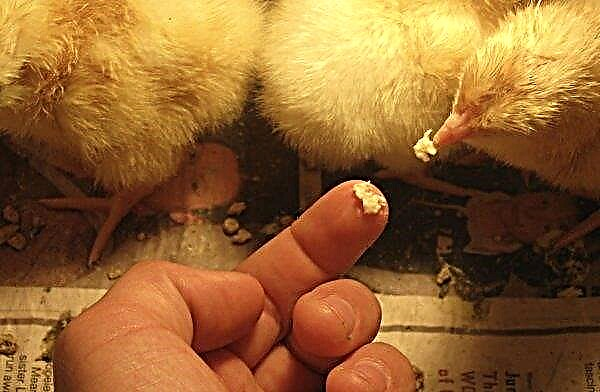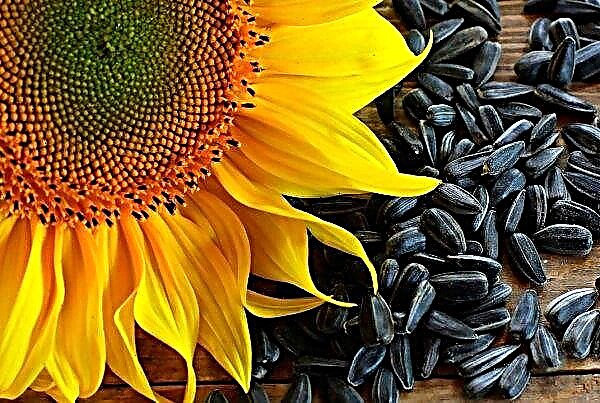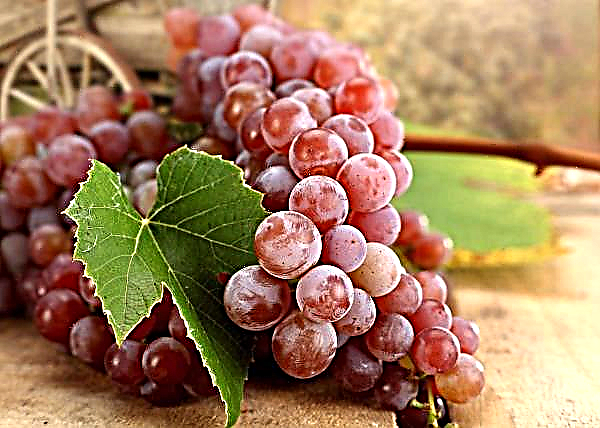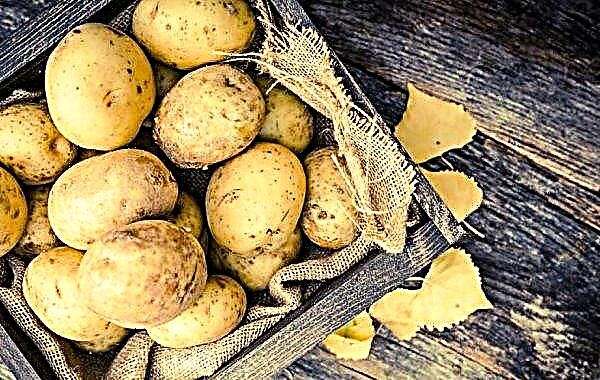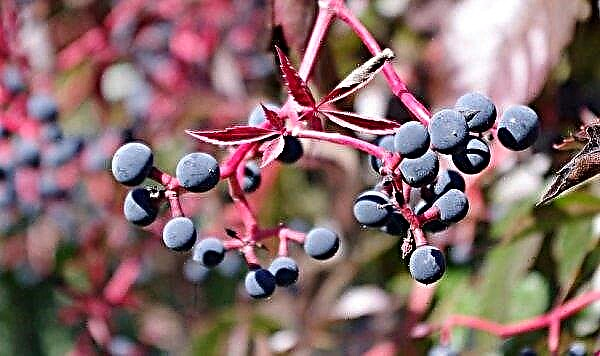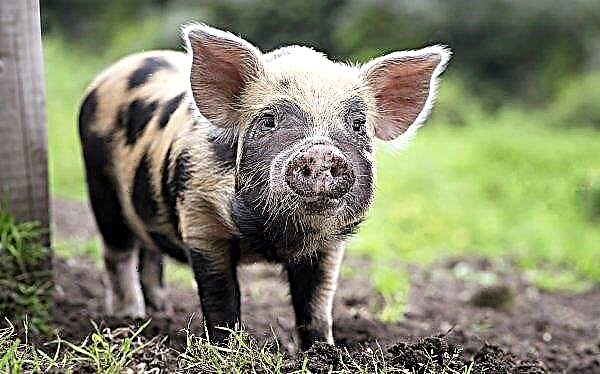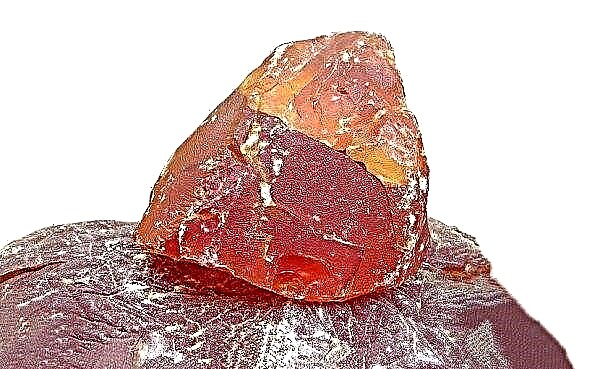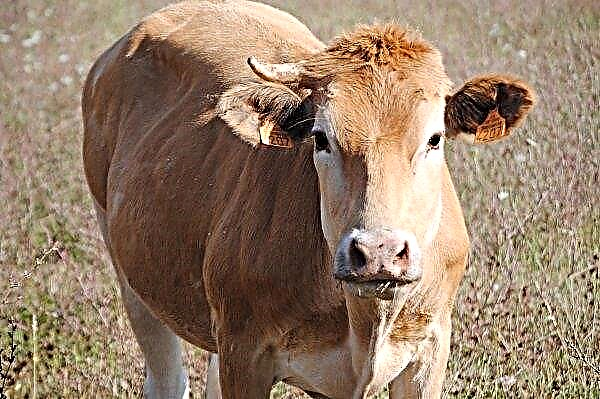Carrots are very beneficial for the human body. To consume vitamin root crops in the summer, its early varieties are grown. They will be discussed later in the article.
Features and differences of early varieties of carrots
- Most early ripening varieties have some disadvantages:
- not very plentiful crops;
- low sugar content;
- shorter shelf life (for its extension, later sowing is practiced).
- However, the advantages of growing early carrots are as follows:
- getting early vitamin products;
- short ripening period (up to 100 days);
- with later sowing, winter storage is practiced;
- the possibility of obtaining two crops (early and late sowing).

TOP-11 precocious carrot varieties and their description
To better navigate in a wide variety of early ripe varieties, you need to learn about the features of some of them.
Did you know? Korean carrots were invented in the USSR, and not in Korea. At first, traditional Korean dishes included Beijing cabbage with spices and carrots, but later, due to a shortage of the main ingredient, only carrots and spices remained in the salad.
Alenka
This variety has a mid-early ripening period, and is also characterized by the following features:
- the length of the root crop is up to 12–15 cm, the diameter is 3-4 cm, and the weight is 100–120 g;
- the fruit is typical for carrots (cylindrical), ends with a slightly rounded tip;
- the period of full ripening is about 100 days, and bundled products can be eaten after 50 days;
- from 1 m² you can get up to 8-10 kg of crop;
- the fruits are fragrant, juicy, crispy, slightly sweet in taste;
- characterized by universality of application;
- shows resistance to diseases and cracking;
- widespread cultivation is possible, but is demanding on the composition of the soil and the amount of moisture.
 The variety has good keeping quality.
The variety has good keeping quality.
Amsterdam
The variety has the following characteristics:
- ripening occurs within 80–90 days;
- the fruits are characterized by a bright orange color and a cylindrical shape with a blunt ending. The core is thin;
- length - 14–16 cm, weight - 130–140 g;
- the fruits are sweet and juicy;
- with proper care, the yield is about 6 kg per 1 m²;
- shows resistance to cracking;
- Intended for fresh use and for processing.
 Amsterdam carrots are not recommended to be grown every year in the same place.
Amsterdam carrots are not recommended to be grown every year in the same place.Boltex
Boltex carrots are based on the Chantane variety. It is characterized by such qualities:
- early harvesting - already at 70 days, and bunch carrots are harvested after 55-60 days;
- final ripening occurs on 120-130 days after emergence of seedlings;
- the length of the root crop is up to 15 cm, and the weight is 300-350 g;
- constant and high productivity (up to 8 kg / m²);
- carrots are smooth, juicy and sweet in taste;
- even overripe root crops are not prone to cracking;
- it is used fresh and frozen for mashed potatoes, juices, casseroles;
- It tolerates low temperatures and maintains its presentation and taste.
 It is best to plant this species on those ridges where leafy vegetables were grown.
It is best to plant this species on those ridges where leafy vegetables were grown.
The Bureau
The variety of this early carrot has several advantages:
- the crop ripens for 70–80 days;
- the output of vegetable products - 6-8 kg / m²;
- the vegetable grows to 17–19 cm in length, its weight is from 75 to 250 g;
- the root crop is elongated, elongated, with a flat surface;
- the core is almost invisible, the pulp is juicier and has a pleasant taste;
- lasts up to 3-4 months without deterioration in taste;
- the culture is resistant to the formation of arrows.

Mango
This precocious variety has the following features:
- vegetables are suitable for use already 80–90 days after germination;
- the fetus acquires sizes up to 13–15 cm, and its weight is in the range of 100–150 g;
- color - orange-reddish, the pulp is very tasty;
- shows resistance to cracking and overgrowing of fruits;
- vegetables are distinguished by good keeping quality (90–96%) and at the same time retain their taste.

Nantes-4
Nantes-4 - this early hybrid is widespread and has very good characteristics:
- bundle production is already ready for 50-60 days, and the final ripening occurs in 90-110 days (some vegetable growers classify it as mid-ripening varieties);
- the weight of the root crop reaches 150 g, the length is about 13 cm;
- the pulp has an orange color with a red tint, the content of carotene in it is 10.6 mg / 100 g;
- the core is almost imperceptible;
- average productivity - not less than 6.5 kg / m²;
- the fruits are not prone to overgrowing and cracking;
- vegetables are preserved until mid-winter;
- used fresh and used for processing.
 The taste of root vegetables of this variety is the reference taste of carrots with elastic, sweet pulp
The taste of root vegetables of this variety is the reference taste of carrots with elastic, sweet pulp
Red ace
The fruits of this carrot are versatile in use and are characterized by such qualities:
- vegetables are ready for use on 90-100 days;
- the root crop is orange, its length is up to 18–20 cm, weight - about 150 g;
- the variety is resistant to the appearance of arrows and lower temperatures;
- carrots have a great taste and universal application.
Did you know? Scottish scientists invented new material from carrotscalled "karan": for itThe fruits were divided into small particles and mixed with resin. This environmentally friendly material is planned to be used for the manufacture of snowboards, spare parts for cars and other products.
Tushon
A very common variety of early carrots Tushon, the characteristics of which include the following:
- a cylindrical root crop up to 20 cm in size and weighing about 100–140 g;
- matures up to 90–100 days;
- juicy and sweet orange pulp;
- lasts up to 4–5 months;
- shows good resistance to diseases and cracking;
- has widespread use.
 To disperse the seeds evenly, you can mix them with sand (1: 2) or dust with chalk
To disperse the seeds evenly, you can mix them with sand (1: 2) or dust with chalk
Chantane
It is very difficult today to find seeds with that name (there are additional words or numbers in it). On its basis, various new varieties were bred. The classic Chantana is considered a carrot with the name Chantane 2461, which has its own characteristics:
- the crop is harvestable for 90–110 days;
- fruits differ in aroma and considerable sugar content (6-10%);
- carrot length - up to 20 cm, weight - 100-200 g;
- the conical fruit ends with a rounded tip;
- perfectly tolerates transportation and storage;
- universal application.

Artek
One of the best representatives of early ripe varieties, having the following characteristics:
- vegetables are ready for use already 50-60 days after emergence;
- final technical maturity occurs on 80–85 days;
- fruits rarely exceed a length of 15 cm, and their average weight is about 150 g;
- productivity - 4.2–6.7 kg / m²;
- susceptible to cracking, so the crop should not be overexposed in the ground;
- the fruits are very juicy and sweet (ideal for obtaining juice);
- shows resistance to decay.

Vitamin
- Vitamin Carrots lives up to its name with its high content of vitamins and other benefits:
- 100 g contains up to 20 mg of carotene and about 10% fructose;
- the fruits are quite large - up to 20 cm in length and weighing from 100 to 200 g;
- root crops fully ripen 90-100 days after seed germination;
- from 1 m² you can get from 4 to 9 kg of vegetables;
- cylindrical shape with a blunt rounded end;
- the pulp has a sweet and delicate taste, the core is small;
- useful properties are not lost even during prolonged storage;
- shows a tendency to defeat diseases and pests.

Features of care and cultivation of early ripening varieties
Depending on the goals pursued by the gardener, as well as the characteristics of the variety, when growing early ripe varieties, winter, spring or summer sowing of seeds is practiced:
- Winter sowing provides vernalization of seeds and harvesting 2-3 weeks earlier than during normal spring sowing. But such vegetables are used mainly immediately after harvest and are not left for winter storage.
- Spring sowing for an early harvest, it is carried out as early as possible (the soil temperature in this case is not lower than + 8 ° C). In the southern regions, it falls at the end of March or the beginning of April, in cooler regions - in the middle of April.
- For use in the winter season carrots are sown in May.
- After collecting beam products early ripe varieties can be sown repeatedly, but not later than July 20 and subject to watering.
Important! Carrot seeds are characterized by a long germination period, so it is advisable to soak them before planting.
Preparation of seed material consists of the following stages:
- Pour warm water (change the water 2 times to remove the essential oils that inhibit germination) and leave for several hours.
- Transfer seeds to a flat bowl and cover with a damp cloth.
- Keep it like this for 2 days at a temperature of about + 20 ° C. The fabric needs to be moistened periodically so that it does not dry.
- Dry the seeds before sowing so that they are crumbly and it is convenient to sow them.
 If the seeds are covered with a special coating by the producer, then they can be sown immediately
If the seeds are covered with a special coating by the producer, then they can be sown immediately
Carrots will grow on almost any soil, but good yields can be obtained if the soil is loose, breathable and rich in nutrients. Also, the vegetable prefers areas with good lighting.
Sowing and further care for early varieties is the same as for other varieties of carrots:
- Seeds are planted to a depth of 1-1.5 cm, the distance between them is 1-2 cm. Aisles are placed at a distance of 20 cm.
- The soil is slightly compacted and mulched with peat (layer - 1 cm).
- To accelerate the germination of the beds can be covered with a film.
- Planting should be systematically weed from weeds and loosen (every 2 weeks).
- Vegetable needs thinning. The first time the seedlings are thinned out in phase 2 of these leaves. Repeated procedure is carried out when 4 sheets appear. The optimum distance is 4–5 cm.
- Carrots cannot tolerate waterlogging - an average of 1 liter of water is enough for 1 m². Watering is carried out as the soil dries (once every 7-10 days), in wet weather - are reduced. Before harvesting root crops for storage, they stop moistening for 2-3 weeks.
- An early vegetable needs to be fed with mineral fertilizers. Feeding is carried out in phase 4 of these sheets. To do this, in a bucket of water dissolves at choice 1 tbsp. l nitrophoski, 2 cups of ash or a mixture of 20 g of potassium salt, 10 g of urea and 25 g of superphosphate.

For the successful cultivation of early vegetable products, you need to consider some rules and recommendations:
- carrots can only be planted in their original place after 3 years;
- umbrella crops (dill, parsley, fennel, etc.) are considered undesirable precursors, since they have common diseases and pests with carrots;
- planting can be done after tomatoes, cucumbers or cereals;
- a good fertilizer for carrots is wood ash;
- sawdust will add friability to loamy soils;
- making fresh manure is not recommended - it causes deformation of the root crop;
- to eliminate thinning, you can apply the proven method - brew a paste of flour and after cooling, typing in a syringe without a needle, apply it with drops at the right distance on toilet paper. Sprinkle seeds on top, after drying, remove those that are not stuck. Roll paper, and when planting, unfold along the bed. Under the influence of moisture, the paper will become sour and the seeds will sprout, but they will no longer need to be torn.
Important! If the top of the root crop is located above the surface of the soil, then over time it turns green, which is bad for its taste. For this reason, such tops need to be sprinkled with earth.
Harvesting and storage
Early carrots are harvested in accordance with the growing season, which is usually about 80–90 days. Such root crops are usually harvested gradually, using in food fresh or for processing. By mid-July, early varieties are usually already removed from the beds.
Root crops that have reached a diameter of more than 1 cm can already be used. The vacated place can be used for planting lettuce, bush beans or other crops with fast growth and short growing season, or plant siderata in this place. Early ripe varieties are usually not used for storage - for this, late ripe carrots are grown. But some varieties that are sometimes referred to mid-season (for example, Alyonka or Vitamin) with late cultivation can be used in winter.

When saving carrots, you need to follow some recommendations:
- only healthy and intact fruits are selected for storage;
- storage temperature should be within + 2 ... + 3 ° С, and humidity - up to 98%;
- fruits are stored in clay, sawdust, etc., but the best way is dry sand in boxes;
- so that the carrots do not begin to germinate, the tops of the leaves need to be made 2-3 mm below the top of the root crop.
With the right selection of an early variety of carrots and using all the tips and recommendations given in the article, you can provide your family with year-round vitamin products.

